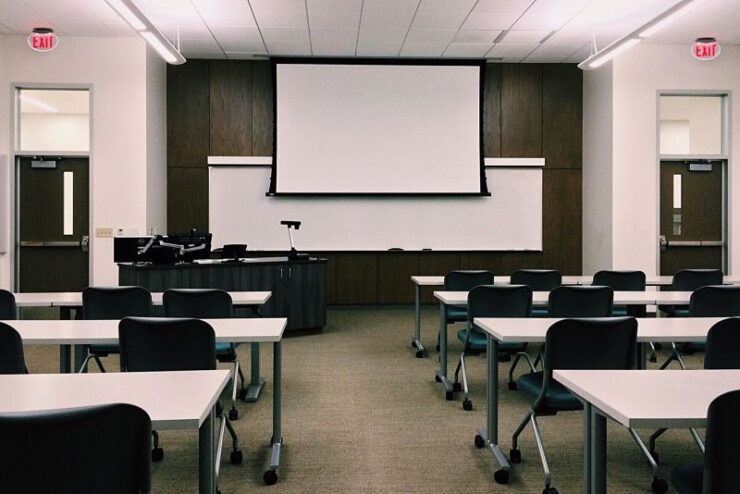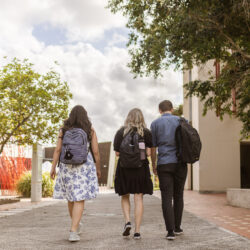Reimagining Higher Education In Australia, From The Past To The Present
The Universities Accord has been billed as a once-in-a-generation opportunity to “reimagine” Australian higher education and plan for the future over a “30-year horizon.”
After an interim report in July, the review panel is due to finalize its work in December. This is expected to cover everything from student fees to international students, research and working conditions.
But what is the current state of Australian higher education? And how did we get here?
My new report, Mapping Australian Higher Education 2023, looks at trends in the university sector. It shows how the past 30 years have been characterized by vast changes, both transformative and tumultuous.

Enrollments, research output and revenue tripled or more in the three decades to 2019. This growth brought benefits but also problems. Cheating and dropping out became more common. Graduate outcomes worsened and student debt increased. Academic staff employment conditions deteriorated significantly.
Thanks to COVID, the early 2020s were also characterized by border and campus closures, a huge drop in international student numbers, reduced fee revenues, and university job losses.
At least temporarily, these disruptions ended three decades of growth for Australian universities.
Huge growth in international students
In the mid-1980s the Hawke Labour government opened up Australian university places to fee-paying international students. It was one of the most important higher education policy decisions ever made.
Public universities proved to be surprisingly entrepreneurial, sparking double-digit annual international enrollment growth rates through the 1990s.
In the late 1990s the Howard Liberal government linked international education to skilled migration. Study in Australia earned points towards permanent migration programs. Later reforms added points for qualifications leading to in-demand occupations such as accounting and engineering.
Opportunities for migration made Australia more attractive to international students in the 2000s. But it also led to problems, including migration-driven course choices, weakly linked to real labor market needs. The Rudd-Gillard Labor government reduced the list of eligible occupations in 2010. But by then, international student numbers had more than tripled since 2000, to 335,000.
Migration rules were later loosened again, including making it easier for international students to stay and work in Australia after graduation.
International student numbers grew significantly from the mid-2010s until Australia closed its borders in March 2020. In 2019 more than half a million international students made up nearly a third of all higher education enrollments, earning universities almost $10 billion.
The research boom
Profits from international students fueled a 21st-century research boom in Australia’s universities. In inflation-adjusted terms, university expenditure on research nearly tripled to AU$12.7 billion between 2000 and 2020.
In 2020 federal government grants contributed about $4 billion of this total. But policy changes since 2000 drove more far-reaching changes to research than this funding share suggests. These policies aimed to strengthen university-industry links and improve research quality and productivity.
Although politicians still complain that universities and business should work together more, universities have been steering their research towards more commercial and practical topics.
Most university research is now “applied” – aimed at specific objectives. Knowledge for its own sake, known as “basic research”, fell from 30 percent to 19 percent of all research expenditure between 2000 and 2020.
Research outputs – mostly publications – also increased dramatically. For the government’s 2018 Excellence in Research for Australia exercise (which evaluated the quality of research in the 2011 to 2016 period), universities submitted more than 500,000 research outputs for evaluation. That exceeded the Excellence in Research total between 2003 and 2008 period by more than 50 percent.
A significantly expanded specialist academic workforce underpinned this growth. “Research only” academic staff numbers nearly tripled between 2000 and 2019. Research student enrollments increased by almost 80 percent.
Major enrollment growth
University enrollments have also increased significantly since the 1980s.
In 1989, 20 percent of Australians were university students at age 19. By 2007, 30 percent were students. It took just another nine years to reach 40 percent in 2016. The participation rate has remained around that level since.
Total university enrollments hit one million students in 2007 and stood at 1.6 million in 2021. Due to fewer international students, that was slightly less than in 2020, the first overall decrease since 1953.
Domestic student enrollments continued increasing to 2021, last having declined in 2004 (due to government penalties if universities enrolled more than their allocated number of students).
Domestic enrollments probably also fell in 2022, as universities lost students to a strong labor market, but official 2022 enrollment data are not yet available.
Domestic student funding policies
This increase in enrollments happened under a variety of funding systems, but three policy changes since the 1980s are worth noting.
The first and best-known change was a world-first income-contingent student loan scheme, known as HECS, which started in 1989. Students could defer paying their HECS until their income exceeded a threshold amount. HECS helped finance rapid domestic enrollment growth in the early 1990s.
A second important change was the development of new income-contingent loan schemes. By 2024, higher education students will have six schemes supporting different activities. The most important addition to HECS-HELP (the current descendant of the 1989 program) is FEE-HELP. This is mainly for “full-fee” domestic students who do not have government-subsidized fees.
Australia’s 38 public universities are largely not allowed to enroll full-fee domestic undergraduates. But public universities can take domestic postgraduates on a full-fee basis in addition to government-subsidized students. FEE-HELP helped finance significant increases in domestic postgraduates.
For four private universities and more than 100 non-university higher education providers, FEE-HELP meant their domestic students no longer had to pay up-front fees. As of 2021, 7 percent of domestic students study outside the public university system.
A third major change was “demand-driven funding.” This meant instead of the federal government providing each university with a fixed sum for teaching, it provided funds based on how many students were actually enrolled. Caps on bachelor’s degree places were eased between 2008 and 2011 and then removed in 2012.
Demand-driven funding encouraged fast growth in enrollments between 2009 and 2016. But it was expensive, and from 2018 domestic student funding caps at each university were re-imposed, limiting potential enrollment growth.
Academic downsides: dropping out and cheating
Big increases in student numbers created opportunities but also caused problems.
As less academically prepared students started degrees, the proportion not returning for a second year increased from 12.3 percent in 2009 to 15 percent in 2014. Figures improved again in subsequent years, settling at around 13 percent for 2019 and 2020 commencing students.
As universities became financially dependent on international students, they were accused of accepting applicants with inadequate English.
Subject pass rates have increased for commencing international and domestic students in recent years, up from 85-86 percent in 2017 to 89-90 percent in the COVID years of 2020 and 2021. Lockdowns created more time to study, although increased cheating (made easier by online study) is also probably a factor.
We know now-banned contract cheating websites (where students could pay to have someone else complete assignments for them) received substantial traffic from Australia. Universities also report large numbers of academic misconduct cases.
Meanwhile, universities are now grappling with Artificial Intelligence, such as ChatGPT, which poses a new threat to academic integrity.
Graduates with large debts looking for work
The rise in university student numbers meant there were more new graduates looking for work. Their full-time employment rates trended down in the early 2010s, with 2014 outcomes the worst yet recorded. The subsequent recovery was slow. Graduate employment did not return to 2009 levels until 2022.
There have also been major increases in student debt.
By 2023, three million current and former students owed nearly $72 billion, 10 times the total in 2001.
There are many reasons for this, including large increases in enrollments. But there have also been new loans schemes (such as FEE-HELP) allowing students to take on more debt, and three rounds of student contribution increases since HECS began in 1989. On top of this, 2010s HELP repayments were slow due to lower graduate incomes. More recently, we have also seen higher indexation of HELP balances due to inflation.
Migration false hope
The prospects for international graduates are also concerning. They can remain in Australia to work but they earn less than domestic graduates. In part, this is because employers are reluctant to hire them in professional jobs.
About 70 percent of international higher education students express interest in migrating to Australia. But growing international enrollments mean there is intense competition for a limited number of annual permanent residency places.
A 2022 Grattan Institute report found the proportion of former international students with permanent residence six years after arrival has dropped from 25 percent in the 2000s to 12 percent in more recent times. But many former students stay in Australia on temporary visas in the often false hope of eventual permanent residency.
Academic employment conditions deteriorate
Although universities have delivered major increases in research output and student numbers, the organizational strain is showing.
Academics see combined teaching and research positions as normal and desirable. But the public funding system no longer supports this employment model.
Over the past 30 years, government funding moved from mostly being a joint grant for teaching and research to specialized funding for each activity. International and domestic enrollment increases also meant demand for teaching services exceeded demand for research.
Universities followed the logic of these changes.
This has seen universities tend to hire research-only academics on fixed-term contracts, based on whatever funding has been secured for a project. As a result, they lack employment security.
Specialized teaching positions also face difficulties.
There is cultural resistance to making teaching-only academic positions permanent jobs. People tend to be attracted to academic work because of research, not teaching. And research is viewed as more prestigious.
Student enrollments can also be volatile – as the loss of international students at the height of COVID showed. Universities want to avoid locking in staff they may not need in the future.
As a result, universities have a highly casualized teaching workforce. On a full-time equivalent basis, before COVID cut employment, 24 percent of the academic workforce were casual employees, up from 19 percent in 2000. But on a headcount basis, most university teachers are casuals.
Despite a small dip during the COVID years, student satisfaction with teaching has increased since the 1990s. But academics express high levels of dissatisfaction with their insecure employment conditions. To make matters worse, many universities failed to pay casual staff correctly.

Will Australia’s muddle-through success last?
Through a mix of design and muddling through, the period from the 1980s to 2019 successfully delivered much higher enrollments and research outputs.
While 2020-22 were especially difficult years, the system adapted with online study and job cuts. It was hard on students and staff, but no university stopped teaching or went broke. In 2023, international student numbers are recovering strongly.
But should universities be so reliant on them? What happens to the academic workforce if universities keep offering worse employment conditions than other professional work? Is student debt stopping young adults buying homes and starting families?
Foundations of past higher education policy success, such as charging domestic students more and taking additional international students, now look like part of the problem rather than solutions.
So the Universities Accord review panel has an unenviable task. It wants to see a radical new phase of “growth for skills.” But building stable foundations for the status quo will be difficult enough.




























































































